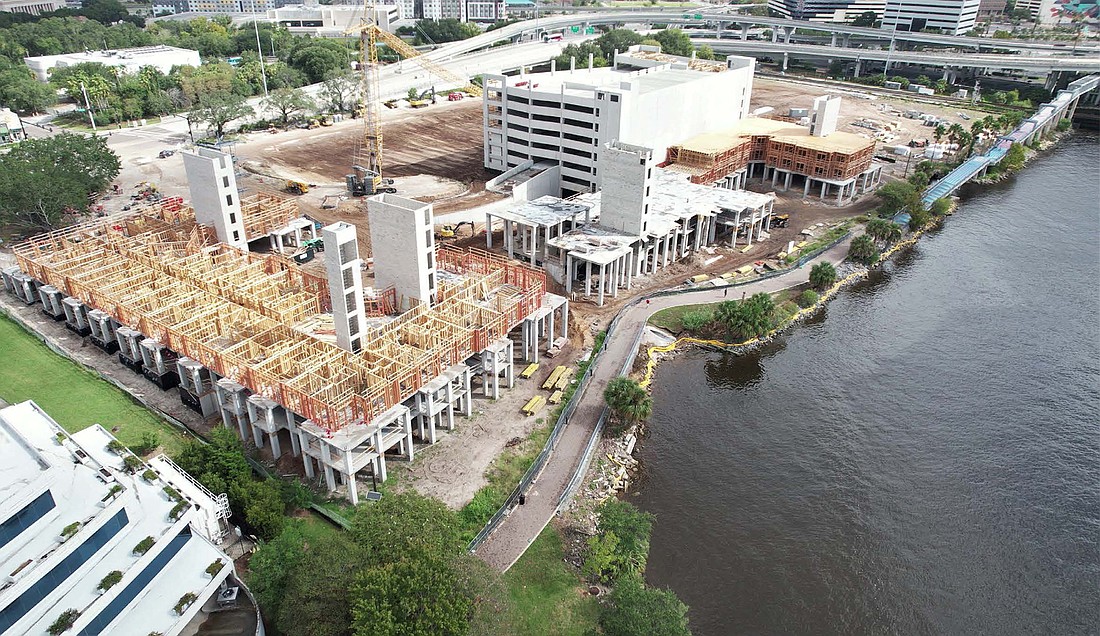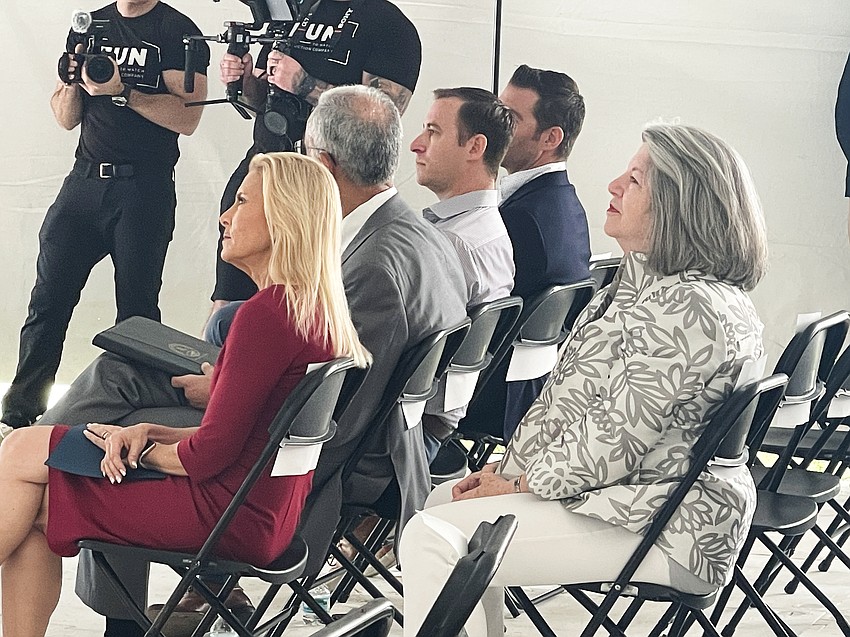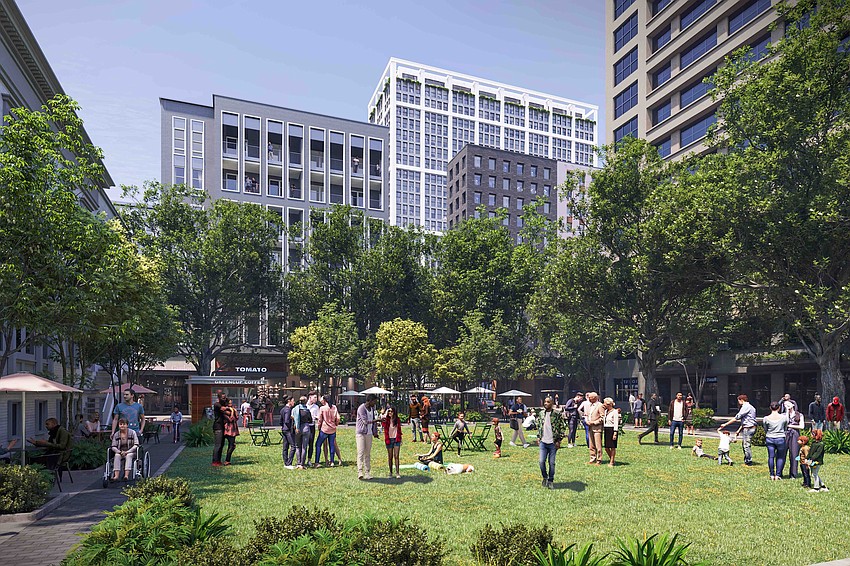
The city Downtown Investment Authority hopes that if Gateway Jax’s $500 million mixed-use development announced Sept. 20 breaks ground on schedule in mid-2024, it will maintain what’s been a steady flow of residential units coming online over the past five years.
There are about 1,000 residential units under construction throughout Downtown’s 3.9-square-mile footprint.
The proposed Gateway Jax Pearl Street District in the North Core near City Hall would add another 1,000 multifamily units.
That would bring the number of multifamily units on the Northbank and Southbank to 6,400, according to the DIA.
DIA CEO Lori Boyer called that pace of development “terrific” but she said the pipeline of future projects is “definitely slowing down.”
According to Boyer, inflation and rising interest rates have caused construction lending to tighten over the past 1½ years and keep building material costs high.
The projects that are under construction secured construction financing 18 months ago, Boyer said.
The result has been developers delaying planned projects to wait out the market or reevaluate pro formas, expand mixed-use projects to add revenue opportunities or request more incentives from the city to make developments viable.
“I wouldn’t say it’s at a pause. It’s not,” Boyer said.
“Because there are individual developers who are seeing it as an opportunity to advance their design, advance their permitting and be absolutely ready to break ground at the point in time things loosen up a little bit.”
The DIA’s Investdtjax.com shows at least nine private development and public infrastructure projects have been completed since September 2022.
The DIA website shows 26 are under construction and 36 are proposed or in city review.
“That belies the fact that there are a lot of projects that are on the drawing board that are in some state of delay or hold because of market economics. They just are,” Boyer said.

Developers working on projects, including Jacksonville Jaguars owner Shad Khan’s $387 million Four Seasons hotel-anchored development and Preston Hollow Community Capital’s estimated $693.39 million master-planned RiversEdge: Life on the St. Johns mixed-use development, have asked for higher property tax refund caps.
The DIA board approved a payout cap increase in May for the Recapture Enhanced Value Grant property tax refund on RiversEdge to $97.98 million from $56 million to compensate for rising property values.
City Council approved a similar REV grant cap increase for the Four Seasons project in January from $47.68 million to $58.7 million.
Miami-based Related Group is considering more retail and residential density in its mixed-use Southbank proposal and Atlanta-based Carter plans to add a hotel to its Northbank Riverfront projects to add revenue and to qualify for a completion grant from the city, according to Boyer.
Tight capital markets
Experts say capital markets are tight for development projects.
“The reality of it is we have lenders that have completely exited the market right now. It’s not like you need to bring more equity in to get a loan,” said DIA board Chair Jim Citrano Jr. at a July 24 meeting. Citrano is Seacoast Bank’s Northeast Florida Region senior vice president.
“There are a lot of cases where there isn’t money available from the traditional development and construction lenders,” he said.
David Walton, VyStar Credit Union senior vice president of commercial services, said Sept. 21 that banks and credit unions have less money to lend for construction and development projects.
He said depositors have been shifting money into no-risk bonds, which creates a liquidity issue for banks and credit unions.
To keep depositors, Walton said financial institutions have had to increase their rates of return, which also reduces the ability to lend for large developments.
According to Walton, developers who bring a sizable amount of their own equity into a project, like Gateway Jax, or have a long-standing relationship with a bank are the most successful in securing financing in current market conditions.
Before interest rates started to increase in 2022, Walton said rates were artificially low for nearly 12 years.
“That made pretty much every construction project hurdle look real good. It’s a lot different now that the cost of capital on the borrowing side has gone up two- to threefold,” Walton said.

Growth and infrastructure
DIA officials are hoping the Federal Reserve maintains a few consecutive quarters of flat interest rates to calm the market.
Boyer’s sense of optimism for Downtown comes from continued growth in residential development and population growth, despite the economic slowdown.
Downtown is adding more than double the DIA’s goal of 425 residential units per year.
“It’s the nuts and bolts of our work (at DIA). It’s the building blocks,” she said.
But DIA officials say Downtown still needs more retail and infrastructure improvements to come to fruition.
Boyer agrees with Mayor Donna Deegan’s focus on improving Downtown streets, green infrastructure like parks and resiliency projects. She said that will reduce the cost of future city incentive packages and attract residents.
Deegan’s 2023-24 Capital Improvement Plan included more than $60 million in Downtown infrastructure projects including Riverwalk work, river bulkheads, completing the St. Johns River Park and Friendship Fountain and the Hogan Street Cycle Track, part of the 30-mile Emerald Trail loop under construction.
Boyer, a former two-term Council member who has been DIA CEO for more than four years, said Downtown’s biggest challenge in the next several years is completing capital improvement projects. She said in the past the city has been slow to secure bids, permits and complete projects.
“Getting the residents there is one thing,” Boyer said.
“But to get the retail to come in behind, to get the visitors to come Downtown, to create the vibrancy, I’ve got to have the infrastructure completed.”